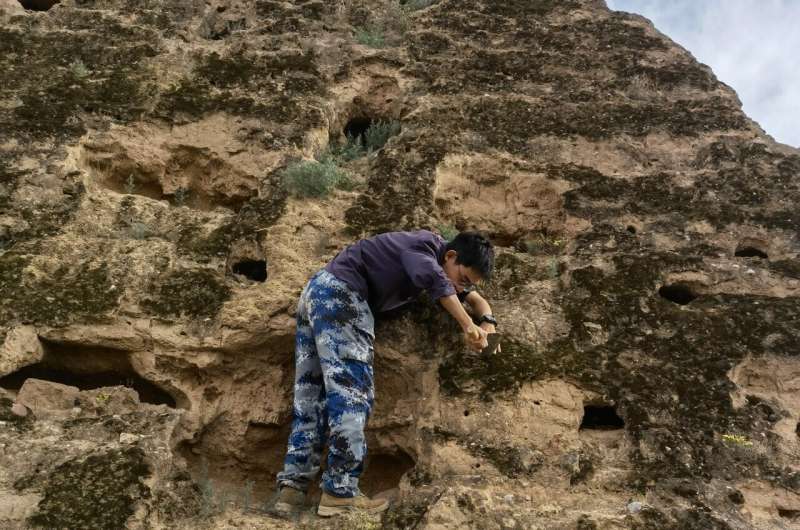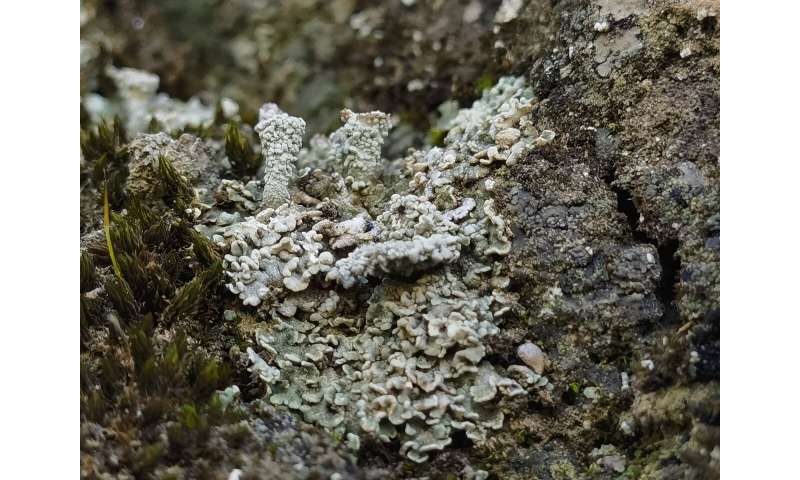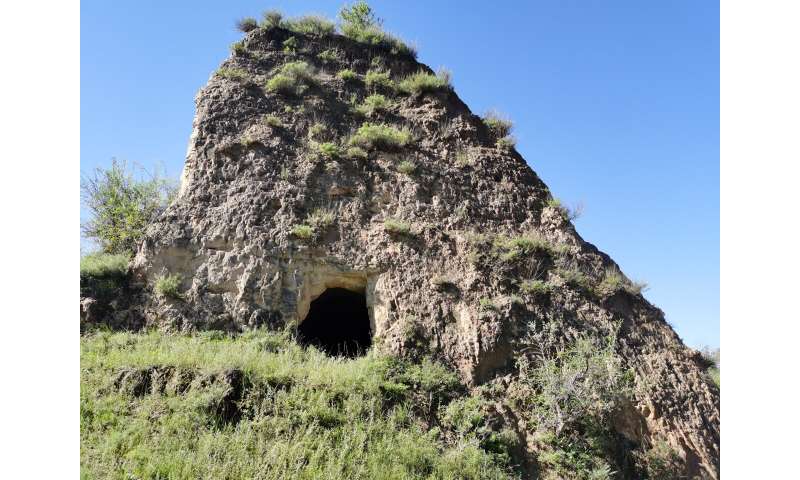December 11, 2023 report
This article has been reviewed according to Science X's editorial process and policies. Editors have highlighted the following attributes while ensuring the content's credibility:
fact-checked
peer-reviewed publication
trusted source
proofread
Biocrusts on Great Wall of China found to be protecting it from erosion

A small international team of soil and water ecosystem conservation specialists has found that biocrusts clinging to parts of the Great Wall of China have been serving to protect the famous structure from erosion. In their paper published in the journal Science Advances, the group describes their study and analysis of material growing on the wall.
The Great Wall of China was built over several centuries starting approximately 221 BC—its function was to protect the people living behind it from enemies attempting to invade from the other side. Prior research has shown that different parts of the wall were made with different materials—mostly rammed earth or stone.
Rammed earth is made by mixing organic materials with inorganic materials. Because of their nature, such materials are more susceptible to erosion. That has led to questions regarding how sections of the wall made with the material have survived for so many years. In this new effort, the researchers wondered if perhaps biocrusts may have played a role.
For many years, scientists have assumed that such biocrusts, which are generally made of cyanobacteria, lichen and mosses, speed up the erosion process. To find out if that is the case, the research team collected samples of the biocrusts from several points along the wall and brought them back to a lab for study.
The researchers measured the mechanical strength and soil stability of the samples. They also tested parts of the wall directly comparing those covered in biocrusts and those that were directly exposed to the elements.
-

Close-up view of biocrusts on the Great Wall. Credit: Bo Xiao -

Researcher Yousong Cao sampling at the Great Wall. Credit: Bo Xiao
They found that the biocrusts were stronger than the rammed earth material upon which they were growing—in some cases, three times as strong. The researchers also found the strength in the biocrusts was due to secretion of tightly bound polymers.
The research team concluded that rather than speeding up erosion, the biocrusts have been slowing the process, helping to preserve the famed structure. Somewhat analogous to their findings were those by a team from the University of Granada working in Honduras that found that organic plant materials added to plasters by early Mayan people have served to reduce weathering of the stone structures they built.
More information: Yousong Cao et al, Biocrusts protect the Great Wall of China from erosion, Science Advances (2023). DOI: 10.1126/sciadv.adk5892
Journal information: Science Advances
© 2023 Science X Network



















